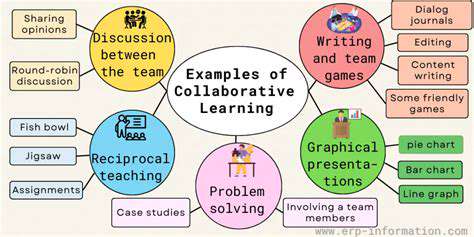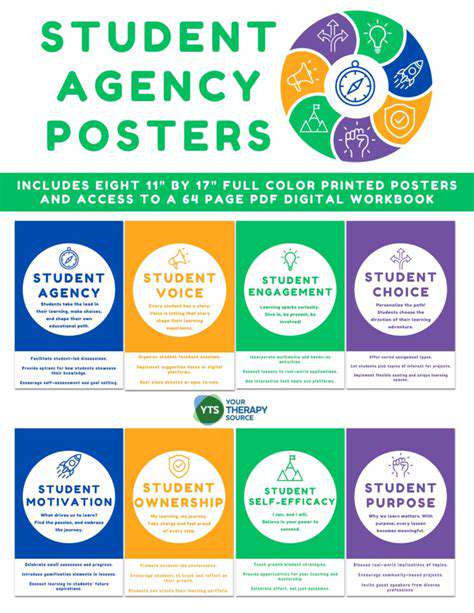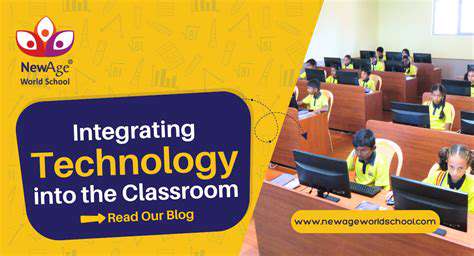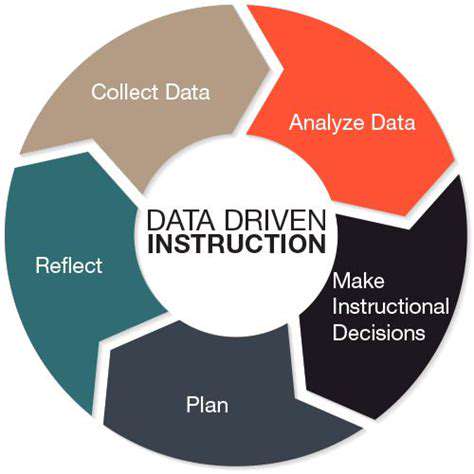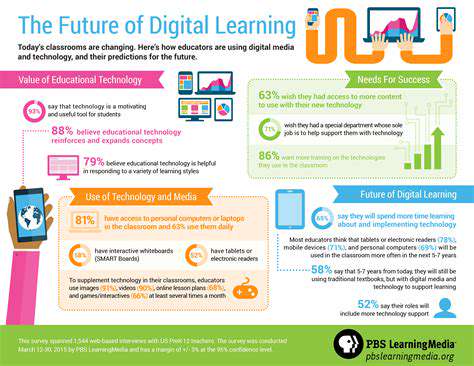AI in Summative Assessment: Automating and Enhancing Evaluation
Introduction to AI in Educational Assessment
Defining AI in Educational Assessment
Artificial intelligence (AI) in educational assessment encompasses a broad range of technologies and methodologies aimed at automating, enhancing, and potentially revolutionizing the way we evaluate student learning. From automated essay scoring to adaptive testing platforms, AI tools are increasingly being integrated into the assessment process. This integration allows for more efficient and potentially more nuanced evaluation of student knowledge, skills, and understanding, compared to traditional methods. Understanding the different types of AI employed is crucial to comprehending their impact on the educational landscape.
This includes machine learning algorithms that analyze large datasets of student performance data to identify patterns and predict future outcomes. Moreover, AI-powered tools can personalize the assessment experience for each student, tailoring questions and feedback to their specific needs and learning styles. This personalization can lead to a more effective and engaging learning environment, as well as more accurate assessments of individual student progress.
Automating the Scoring Process
One of the most impactful applications of AI in educational assessment is automating the scoring of assessments, particularly those that involve subjective elements like essays or creative writing. AI algorithms can be trained on a vast corpus of graded student work to learn the nuances of quality writing, identifying various criteria such as clarity, coherence, and creativity. This automation significantly reduces the time and resources required for grading, allowing educators to focus on providing personalized feedback and fostering deeper learning.
This automated scoring process can provide immediate feedback to students, allowing them to identify areas for improvement in real-time. Moreover, the standardization inherent in AI scoring can reduce the potential for human bias, ensuring a more equitable assessment process for all students.
Personalizing Learning through Adaptive Testing
AI-powered adaptive testing platforms can dynamically adjust the difficulty of questions based on a student's responses. This personalized approach allows the system to pinpoint the specific knowledge gaps and strengths of each student, enabling a more targeted and effective learning experience. By continuously adapting to the student's performance, these systems can deliver a highly customized learning path, ensuring that each student receives the appropriate level of support and challenge.
Through adaptive assessment, teachers gain valuable insights into student understanding, allowing them to adjust their teaching methods accordingly. This personalized feedback loop fosters a more engaging and effective learning environment, leading to improved student outcomes.
Improving Accessibility and Inclusivity
AI-driven tools can significantly enhance accessibility for students with diverse learning needs. For instance, AI-powered tools can translate assessments into multiple languages, provide audio descriptions of visual content, and offer alternative formats for presenting information. These features make educational assessments more inclusive, allowing all students, regardless of their background or abilities, to demonstrate their knowledge and skills.
Ethical Considerations and Future Trends
While AI offers promising advancements in educational assessment, it's essential to consider the ethical implications of its use. Issues such as data privacy, algorithmic bias, and the potential for over-reliance on technology need careful consideration. It is important to ensure that AI tools are used responsibly and ethically to support, rather than replace, the critical role of human educators.
Future trends in AI-powered assessment likely include integrating AI into more comprehensive learning platforms, further personalizing the learning experience, and developing new methodologies for evaluating complex skills like critical thinking and problem-solving. Furthermore, ongoing research will focus on refining algorithms to mitigate bias and ensure fairness in assessment, paving the way for a more equitable and effective educational system.
Improving Assessment Design and Item Quality

Improving Assessment Design for Enhanced Learning
Effective assessment design is crucial for fostering a robust learning environment. It goes beyond simply measuring knowledge; it should actively guide learners toward deeper understanding and skill development. A well-structured assessment not only evaluates what students know but also identifies knowledge gaps and areas needing further attention, ultimately facilitating personalized learning pathways. By thoughtfully considering the assessment's purpose and aligning it with learning objectives, educators can create a more dynamic and engaging learning experience for all students.
A key element in improving assessment design is ensuring alignment with learning objectives. This means that the assessment directly measures the knowledge, skills, and abilities that students are expected to acquire. When assessments are aligned, educators can be confident that they are evaluating what students have learned, and not something else entirely. This alignment promotes a more focused and effective learning process, leading to better outcomes for students.
Focusing on Validity and Reliability in Assessments
Validity and reliability are essential characteristics of any effective assessment. A valid assessment accurately measures what it intends to measure, while a reliable assessment consistently produces similar results under similar conditions. This ensures that the assessment truly reflects the student's understanding and abilities, minimizing bias and maximizing the accuracy of the evaluation. Without validity and reliability, the assessment loses its value in providing meaningful feedback and guiding future learning.
Ensuring validity requires careful consideration of the assessment questions and tasks. They must be clearly worded, unambiguous, and directly related to the learning objectives. Reliability is achieved through the development of consistent and standardized assessment procedures. These procedures minimize variations in scoring and ensure that the assessment results are consistent, regardless of who is administering or grading the assessment.
By prioritizing both validity and reliability, educators create assessments that provide a more accurate and comprehensive evaluation of student learning. This leads to a more accurate and trustworthy picture of student comprehension, allowing for more precise identification of areas needing improvement. This accuracy is critical for educators to make informed decisions about teaching strategies and interventions.
Utilizing Diverse Assessment Methods for Comprehensive Feedback
Moving beyond traditional methods like multiple-choice tests, a diverse range of assessment methods can offer a more comprehensive view of student understanding. Employing strategies such as performance-based tasks, projects, presentations, and portfolios can provide a more authentic and engaging learning experience. These methods allow students to demonstrate their abilities in a practical and meaningful context, fostering a deeper understanding of the subject matter.
Incorporating a variety of assessment methods allows for a more holistic view of student learning. It goes beyond simply testing recall and extends to evaluate critical thinking, problem-solving, and communication skills. This multifaceted approach provides educators with a richer understanding of student strengths and weaknesses, enabling them to tailor their instruction to meet individual needs.
Furthermore, diverse assessment methods often promote active learning and engagement. Students are more likely to be motivated and invested in the learning process when they feel their knowledge and skills are being assessed in a way that accurately reflects their abilities. This active participation promotes a more dynamic and engaging learning experience for all students.

Ethical Considerations and Future Trends
Bias and Fairness in AI-Powered Assessment
A critical concern in utilizing AI for summative assessment is the potential for bias. AI algorithms are trained on data, and if that data reflects existing societal biases, the AI system may perpetuate and even amplify those biases in its grading. For example, if the training data predominantly features students from a specific socioeconomic background or with particular learning styles, the AI might inadvertently favor those traits, disadvantaging students from other backgrounds. Addressing this requires careful dataset curation, algorithmic transparency, and ongoing monitoring to detect and mitigate bias, ensuring that all students receive a fair and equitable assessment.
Furthermore, the fairness of the assessment process is paramount. Students should have equal access to the AI-powered tools, and the assessment criteria should be clearly communicated and consistently applied. The algorithms should be designed to assess the knowledge and skills being measured without undue influence from factors unrelated to learning outcomes. This necessitates rigorous testing and validation of the AI system to ensure its unbiased application across diverse student populations.
Data Privacy and Security
The use of AI in summative assessment inevitably involves the collection and processing of student data. Maintaining the privacy and security of this data is paramount. Robust measures must be implemented to safeguard student information from unauthorized access or misuse. This includes anonymization techniques, encryption protocols, and compliance with relevant data protection regulations, such as FERPA in the United States.
Transparency regarding data usage is also crucial. Students and parents should be informed about how their data is being collected, processed, and utilized in the assessment process. Clear policies and procedures should be established to ensure that data is handled ethically and responsibly.
Transparency and Explainability
Understanding how AI systems arrive at their assessment decisions is essential for building trust and ensuring accountability. Black box algorithms, where the decision-making process is opaque, can be problematic in educational settings. Educators need to understand the reasoning behind the AI's grading to identify potential issues and ensure the assessment aligns with pedagogical goals. Developing explainable AI (XAI) models is critical to fostering trust and allowing for meaningful feedback to students and educators alike.
Accessibility and Inclusivity
AI-powered assessment tools should be designed with accessibility in mind. Students with disabilities should have equal access to these tools, and the systems should be adaptable to accommodate diverse learning styles and needs. This may involve alternative input methods, customized interfaces, or providing appropriate accommodations in the assessment process. This ensures all students can demonstrate their knowledge and skills fairly and effectively.
Impact on Teacher Roles and Responsibilities
The integration of AI in summative assessment will undoubtedly reshape the role of teachers. Teachers will transition from solely administering assessments to becoming more involved in designing, interpreting, and utilizing the AI-generated results. Their roles will evolve to focus on providing personalized feedback, guiding student learning, and ensuring the AI tools are used effectively in the classroom. This shift demands professional development and support for educators to adapt to these changing roles and responsibilities.
Future Trends and Research Directions
The future of AI in summative assessment holds immense potential, but it also necessitates ongoing research and development. Researchers should explore the use of AI in providing personalized learning pathways based on assessment data, developing more nuanced and comprehensive feedback mechanisms, and examining the impact of AI on student motivation and engagement. Further research is crucial to address the ethical and pedagogical implications of AI in education, ensuring its responsible and beneficial implementation.
Read more about AI in Summative Assessment: Automating and Enhancing Evaluation
Hot Recommendations
- The Gamified Parent Teacher Conference: Engaging Stakeholders
- Gamification in Education: Making Learning Irresistibly Fun
- The Future of School Libraries: AI for Personalized Recommendations
- EdTech and the Future of Creative Industries
- Empowering Student Choice: The Core of Personalized Learning
- Building Community in a Hybrid Learning Setting
- VR for Special Education: Tailored Immersive Experiences
- Measuring the True Value of EdTech: Beyond Adoption Rates
- Addressing Digital Divide in AI Educational Access
- Preparing the Workforce for AI Integration in Their Careers



